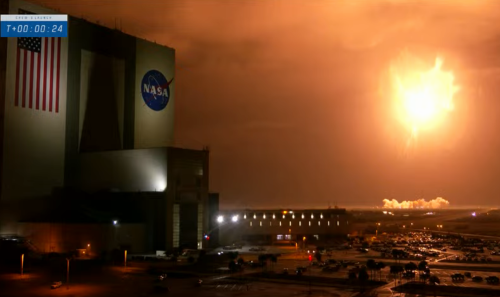Endurance successfully splashes down, returning 4 astronauts after a 6 month mission
Capitalism in space: SpaceX’s Endurance spacecraft successfully splashed down tonight off the coast of Florida, bringing home four astronauts after a six month mission on ISS.
This event capped a remarkable month for SpaceX. It launched two manned missions to ISS (one of which was entirely private) while returning two (including that private mission after seventeen days). In between the company also launched three Falcon 9 rockets putting satellites into orbit. All told, in the four weeks since the April 8th launch of the Axiom private manned mission to ISS, SpaceX completed five launches, all of which successfully landed the first stages for later reuse.
More important, everything on every one of those launches and splashdowns went like clockwork, with no problems, delays, or glitches. The only thing that delayed anything was the weather, something no one can do anything about.
Rocket engineering is hard, maybe the hardest technical challenge facing humans. The high quality of SpaceX’s work however is beginning to make it seem routine.
Capitalism in space: SpaceX’s Endurance spacecraft successfully splashed down tonight off the coast of Florida, bringing home four astronauts after a six month mission on ISS.
This event capped a remarkable month for SpaceX. It launched two manned missions to ISS (one of which was entirely private) while returning two (including that private mission after seventeen days). In between the company also launched three Falcon 9 rockets putting satellites into orbit. All told, in the four weeks since the April 8th launch of the Axiom private manned mission to ISS, SpaceX completed five launches, all of which successfully landed the first stages for later reuse.
More important, everything on every one of those launches and splashdowns went like clockwork, with no problems, delays, or glitches. The only thing that delayed anything was the weather, something no one can do anything about.
Rocket engineering is hard, maybe the hardest technical challenge facing humans. The high quality of SpaceX’s work however is beginning to make it seem routine.

